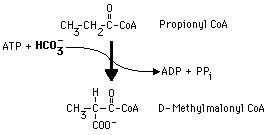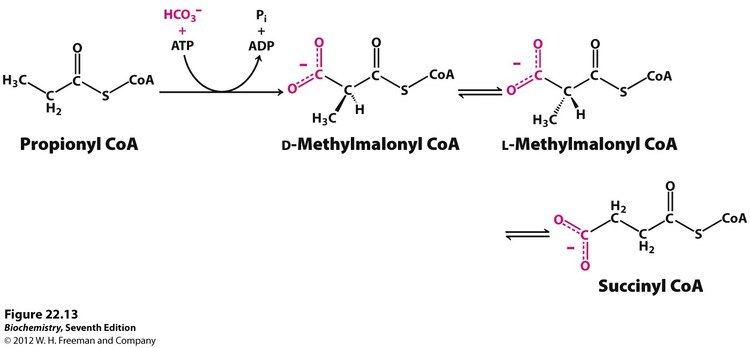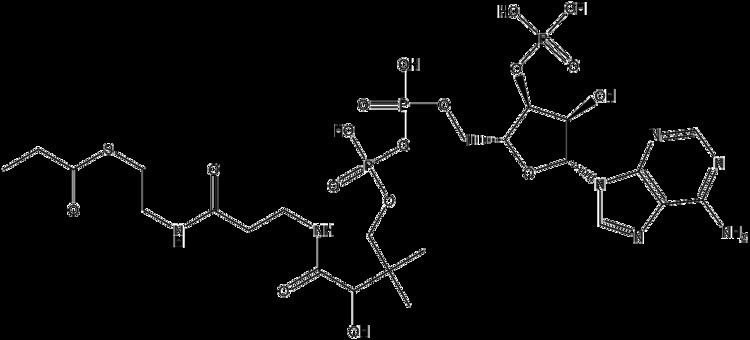Formula C24H40N7O17P3S Pubchem 439164 | Molar mass 823.6 g/mol | |
 | ||
Biochemstry carboxylase acetyl coa pyruvate propionyl coa review fast learning
Propionyl-CoA is a coenzyme A derivative of propionic acid.
Contents
- Biochemstry carboxylase acetyl coa pyruvate propionyl coa review fast learning
- Production
- Metabolic fate
- Metabolism in plants and insects
- References
Production
There are several different ways in which it is formed:
Metabolic fate
In mammals, propionyl-CoA is converted to (S)-methylmalonyl-CoA by propionyl-CoA carboxylase, a biotin-dependent enzyme also requiring bicarbonate and ATP.
This product is converted to (R)-methylmalonyl-CoA by methylmalonyl-CoA racemase.

(R)-Methylmalonyl-CoA is converted to succinyl-CoA, an intermediate in the tricarboxylic acid cycle, by methylmalonyl-CoA mutase, an enzyme requiring cobalamin to catalyze the carbon-carbon bond migration.

The methylmalonyl-CoA mutase mechanism begins with the cleavage of the bond between the 5' CH
2- of 5'-deoxyadenosyl and the cobalt, which is in its 3+ oxidation state (III), which produces a 5'-deoxyadenosyl radical and cobalamin in the reduced Co(II) oxidation state.

Next, this radical abstracts a hydrogen atom from the methyl group of methylmalonyl-CoA, which generates a methylmalonyl-CoA radical. It is believed that this radical forms a carbon-cobalt bond to the coenzyme, which is then followed by the rearrangement of the substrate's carbon skeleton, thus producing a succinyl-CoA radical. This radical then goes on to abstract a hydrogen from the previously produced 5'-deoxyadenosine, again creating a deoxyadenosyl radical, which attacks the coenzyme to reform the initial complex.

A defect in methylmalonyl-CoA mutase enzyme results in methylmalonic aciduria, a dangerous disorder that causes a lowering of blood pH.
Metabolism in plants and insects
In plants and insects propionyl-CoA is metabolized to acetate in a very different way, similar to beta-oxidation.

Not all details of this pathway have been worked out, but it appears to involve formation of acrylyl-CoA, then 3-hydroxypropionyl-CoA.

This is metabolized with loss of carbon 1 of 3-hydroxypropionyl-CoA as carbon dioxide, while carbon 3 becomes carbon 1 of acetate.
